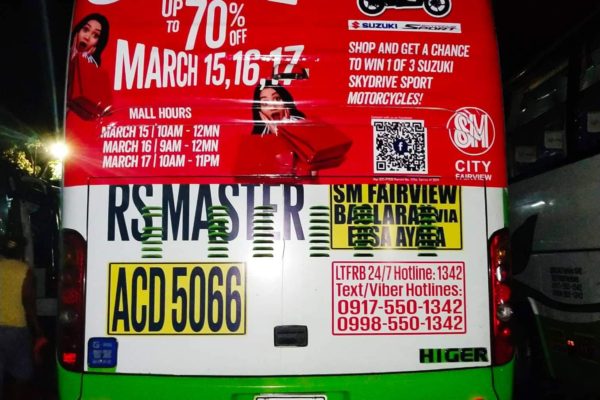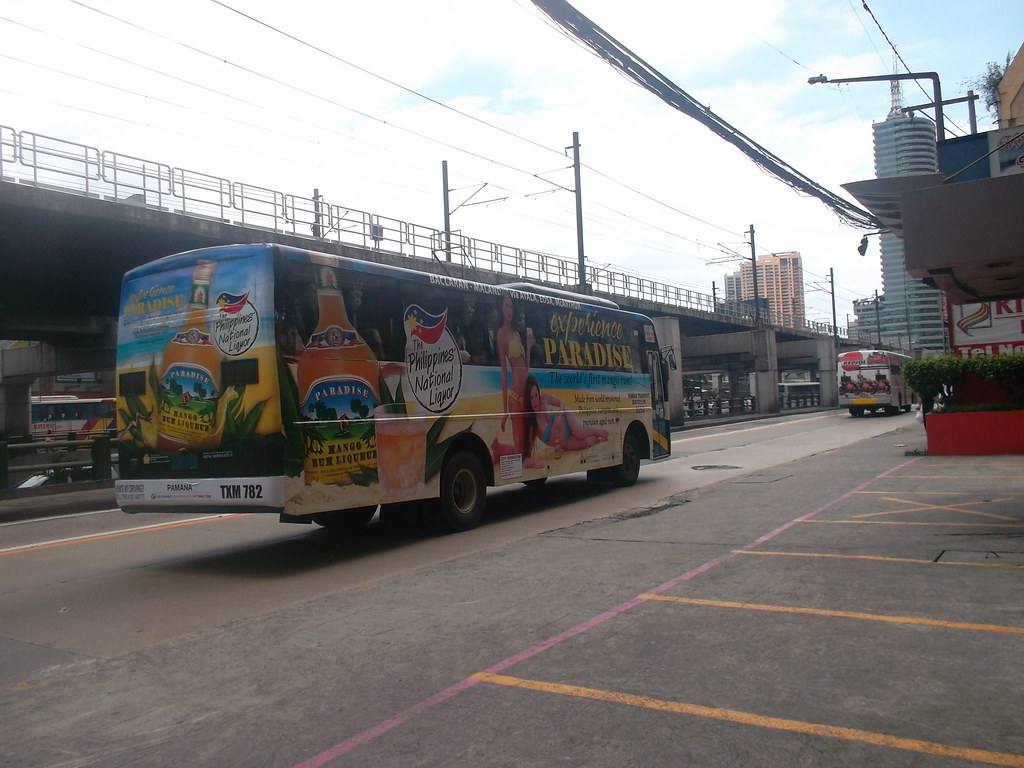Boost Your Business with Transit Advertising Philippines
Boost Your Business with Transit Advertising Philippines
Blog Article
Exactly How Transportation Marketing Can Transform Mass Transit Spaces Into Dynamic Advertising Platforms
Transportation advertising and marketing holds substantial capacity to redefine mass transit rooms right into lively advertising and marketing platforms that notify and involve. By using ingenious layouts such as interactive kiosks and electronic displays, brands can not only reach a varied audience yet additionally boost the general traveler experience. This technique produces an one-of-a-kind opportunity for brand names to get in touch with customers in a setting that is typically ignored. As we discover the multifaceted advantages and progressing methods of transit advertising and marketing, it increases the concern of how this makeover might redefine our interactions with both brands and the metropolitan atmosphere.
Advantages of Transit Marketing

Furthermore, transportation advertising is extremely cost-effective compared to traditional media. It permits advertisers to attain high perceptions at reduced prices, making best use of return on investment. The captive target market of travelers provides an opportunity for brand names to communicate their messages to individuals that are typically responsive during their travel times.
In addition, the dynamic nature of transportation advertising and marketing enables campaigns to be updated often, ensuring that messaging continues to be timely and appropriate. This flexibility can be essential in reacting to market fads or promotional occasions, keeping the brand top-of-mind for customers. Finally, the prevalent visibility of transit marketing adds to brand recall; repeated exposure within familiar travel contexts strengthens brand name understanding and cultivates customer loyalty, eventually boosting and driving sales brand reputation.
Kinds Of Transportation Marketing
Public transportation systems supply numerous styles for advertising and marketing, each catering to different advertising strategies and target market engagement techniques. One noticeable kind is external bus and train wraps, which cover the whole vehicle and create a mobile billboard effect, permitting high visibility in city atmospheres. These covers can catch attention as they go across busy roads, reaching a varied target market.
An additional preferred style is indoor advertising, that includes posters, electronic displays, and advertisements on transit seats. These placements engage passengers during their journey, reinforcing brand name messaging in a constrained space. Digital shows, particularly, use the benefit of vibrant web content, enabling advertisers to update messages in real-time.
Terminal advertising is additionally considerable, featuring posters, banners, and interactive kiosks within transit stations. These advertisements take advantage of foot traffic and can target particular demographics based upon location.
Last but not least, marketing partnerships with transit authorities can result in unique campaigns, such as themed transportation experiences or occasions, boosting the general involvement with travelers. Each kind of transportation advertising and marketing offers distinctive advantages, allowing brand names to customize their approach to successfully reach their target market within the general public transportation ecological community.
Involving Commuters Effectively
Commuters are progressively swamped with advertising messages throughout their day-to-day trips, making it crucial for brands to involve them in cutting-edge methods. To catch focus in this crowded area, advertisers need to focus on creative thinking and importance. Using eye-catching visuals and concise messaging can dramatically improve the possibility of involvement.
Interactive components, such as QR codes or increased reality features, can also change static ads right into immersive experiences, promoting a deeper connection with the target market. Brand names must concentrate on resolving travelers' rate of interests and requirements, customizing messages to resonate with their way of additional resources life, whether via promos for local businesses or services designed to boost their travelling experience.
Furthermore, timing plays a vital duty; strategically positioning ads during top commuting hours can take full advantage of visibility and influence. Engaging travelers successfully also entails leveraging social networks combination, enabling passengers to share their promotions or experiences directly from transportation systems, consequently intensifying brand reach.
In essence, reliable engagement rests on comprehending the commuter trip and producing engaging, interactive, and pertinent marketing experiences that not only capture attention however also drive activity and commitment. By doing so, brand names can change mass transit right into a dynamic advertising and marketing platform that reverberates with its audience.

Measuring Marketing Impact
Just how can brands properly evaluate the performance of their ad campaign in transportation environments? Determining the effect of transit advertising and marketing calls for a multifaceted technique that incorporates qualitative and measurable metrics. One common technique is tracking interaction through mobile analytics, where brands can examine foot web traffic patterns and application interactions previously, during, and after campaigns.
Surveys can offer beneficial insights right into brand recall and consumer sentiment, allowing brand names to gauge exactly how well their messages reverberate with travelers. Additionally, monitoring social media interaction pertaining to specific campaigns can disclose changes in public perception and brand name discussion.

Moreover, collaborating with transportation firms can enhance measurement precision, as they usually have detailed market information on ridership fads. By incorporating these methodologies, brands can develop a thorough understanding of their advertising and marketing performance, making certain that their projects not only reach but additionally impact their target market properly.
Future Patterns en route Marketing
A significant change why not find out more is anticipated in transit advertising as technological advancements and changing consumer habits reshape the landscape. Transit Advertising Philippines. The combination of interactive media and electronic displays is expected to boost involvement, enabling brands to provide dynamic material that reverberates with diverse target markets. As mass transit systems accept clever innovation, advertisers will leverage real-time information analytics to tailor messages based on traveler demographics and behaviors
Moreover, enhanced truth (AR) is positioned to reinvent the means travelers communicate with promotions. By supplying immersive experiences, AR can transform an ordinary trip right into an engaging story that catches interest and cultivates brand name commitment. This advancement will likely urge marketers to create more experiential projects that drive customer communication.
Sustainability is one more critical pattern influencing transportation advertising and marketing. As ecological awareness grows, brands will progressively look for to align with environment-friendly practices, using sustainable materials and advertising environment-friendly efforts within their campaigns.
Final Thought
To conclude, transportation advertising and marketing supplies significant benefits by enhancing brand name visibility and involving a restricted audience. Via numerous layouts, such as exterior covers and electronic screens, it changes mass transit into a dynamic advertising system. Efficient interaction approaches and robust dimension strategies additionally enhance its impact. As trends evolve, the potential for ingenious communications in between travelers and brand names is positioned to expand, guaranteeing that transit advertising remains a vital part of modern marketing strategies.
Transit advertising and marketing holds substantial possibility to redefine public transportation spaces into dynamic marketing platforms that notify and involve. The prevalent visibility of transportation advertising and marketing adds to brand recall; repeated direct exposure within acquainted traveling contexts reinforces brand name recognition and promotes customer check commitment, inevitably boosting and driving sales brand track record.
How can brand names precisely analyze the performance of their marketing projects in transportation environments?In verdict, transportation advertising and marketing supplies substantial benefits by improving brand exposure and involving a captive audience. Transit Advertising Philippines. As trends evolve, the capacity for innovative communications in between travelers and brands is poised to expand, making sure that transportation marketing stays an important part of contemporary marketing strategies
Report this page